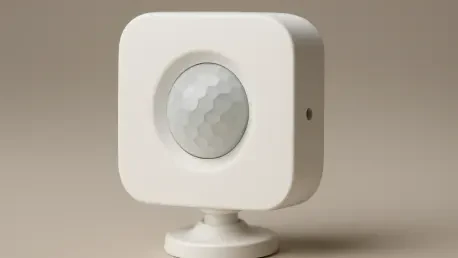I’m thrilled to sit down with Oscar Vail, a renowned technology expert with a deep passion for cutting-edge innovations in fields like quantum computing, robotics, and open-source projects. With his finger on the pulse of the tech industry, Oscar is the perfect person to guide us through the latest developments in smart home technology. Today, we’re diving into Philips’ recent Hue lineup refresh, unveiled at the IFA conference in Berlin. Our conversation will explore the standout products, the game-changing Hue Bridge Pro, and the intriguing MotionAware feature that’s turning heads with its motion-sensing capabilities. We’ll also discuss practical applications, limitations, and what users need to get started with these exciting updates.
Can you give us a broad picture of the new Philips Hue products that were revealed at the IFA conference in Berlin?
Absolutely, Benjamin. Philips dropped a massive update to their Hue lineup at IFA, and it’s clear they’re aiming to reclaim their edge in the smart lighting space. The lineup includes new smart light bulbs and an impressive seven new light strip products, which offer a lot of versatility for different home setups. This refresh feels like a direct response to the growing competition from budget-friendly smart lights that don’t require a hub. Philips seems to be focusing on enhancing user experience with advanced features and better hardware to justify their premium positioning.
What stands out to you most about this new lineup of products?
I’d say the variety and innovation in the light strips really catch the eye. With seven different options, they’re catering to everything from ambient mood lighting to more functional setups. The new bulbs also seem to push boundaries with improved compatibility and features that tie into the broader ecosystem. It’s a strong signal that Philips is listening to user feedback and trying to offer something for everyone, whether you’re a tech enthusiast or just looking to dip your toes into smart lighting.
Let’s dive into the Hue Bridge Pro. How does this new version differ from its predecessor?
The Hue Bridge Pro is a significant upgrade. It’s equipped with a processor that’s five times more powerful and a memory capacity that’s 15 times larger than the previous model. This isn’t just about raw specs—it translates to a much smoother and more responsive system. Users can store over 500 custom lighting scenes, which is a huge leap for personalization, and the faster response times mean your commands are executed almost instantly. It’s powered by the new Hue Chip Pro, which lays the groundwork for cutting-edge features like MotionAware.
Speaking of MotionAware, can you walk us through how this feature works with Hue lights?
Sure, MotionAware is a fascinating addition. It transforms your Hue lights into motion sensors by leveraging the Zigbee protocol. Essentially, it detects motion by measuring fluctuations in wireless signal strength caused by a person moving through the space. When it picks up on that disturbance, the lights automatically turn on—no app, no voice command needed. It’s a clever use of existing technology to add a layer of automation that feels seamless and intuitive.
What are some everyday ways people might benefit from MotionAware in their homes?
There are so many practical applications. Imagine walking into your house after a long day at work, hands full of groceries, and the lights just turn on to welcome you. Or getting up in the middle of the night for a glass of water—your path lights up without fumbling for a switch. Beyond convenience, it can also enhance home security. If an unexpected visitor enters, the lights will activate, stripping away the cover of darkness and potentially deterring intruders. It’s a dual-purpose feature that adds both comfort and peace of mind.
Are there any drawbacks or limitations to MotionAware that users should keep in mind?
Definitely, it’s not a perfect system. For one, it’s designed strictly for indoor use, so you can’t rely on it for outdoor spaces. It also doesn’t work across different rooms due to signal limitations, so you’ll need to set it up individually for each space. Additionally, you need a sufficient number of Hue lights in a room to ensure accurate motion detection—too few, and the system might miss movements. On the plus side, users can customize when it’s active, like limiting it to nighttime hours, which helps manage its scope and energy use.
What do users need to get started with MotionAware, especially in terms of compatibility and costs?
To use MotionAware, the new Hue Bridge Pro is a must-have. It’s the backbone that enables this feature, and it comes with a price tag of nearly $100, which might be a bit steep for some. However, the good news is that the vast majority of Hue products, including most bulbs and light strips, are compatible with MotionAware. Philips has even provided a list of the few products that don’t support it, so it’s easy to check if your setup will work. If you’re already invested in the Hue ecosystem, this upgrade could be a worthwhile addition.
Looking ahead, what’s your forecast for the future of smart lighting and features like MotionAware in home automation?
I’m really optimistic about where smart lighting is headed. Features like MotionAware are just the beginning of how interconnected and intuitive our homes can become. I expect we’ll see even tighter integration with other smart home systems, where lighting doesn’t just react to motion but anticipates needs based on patterns or integrates with security cameras for more robust protection. Energy efficiency will also be a big focus, as will affordability—making these advanced features accessible to more people. The potential for personalization and automation in smart lighting is huge, and I think we’re only scratching the surface.









